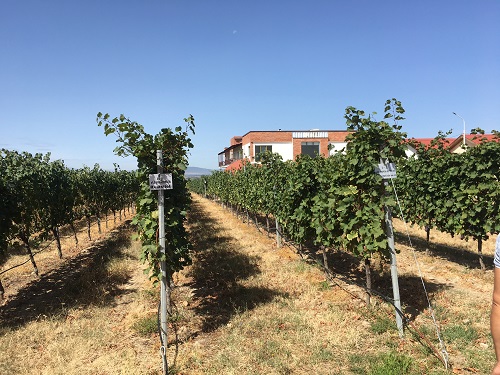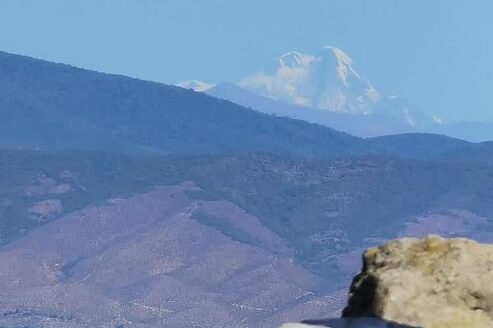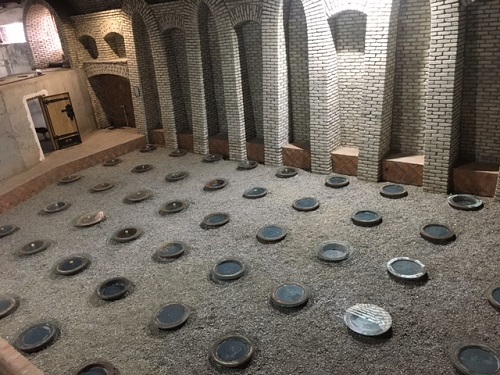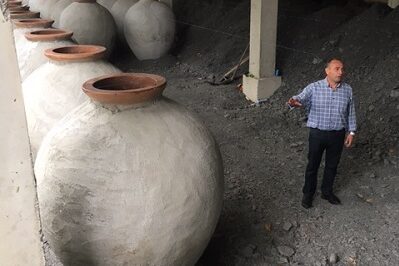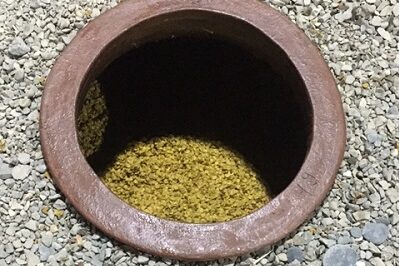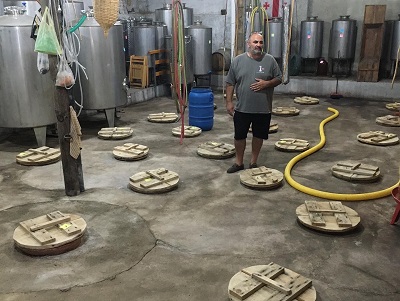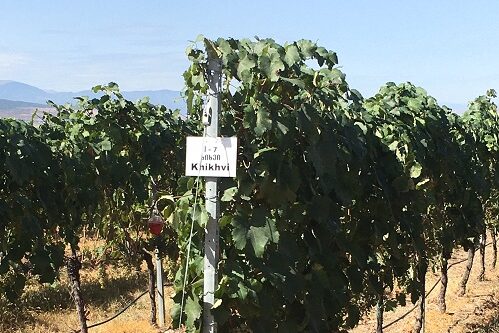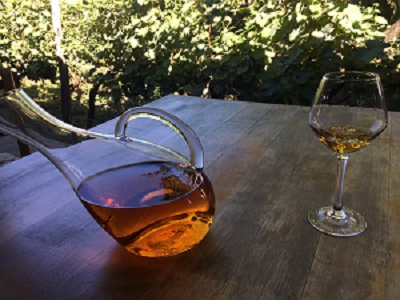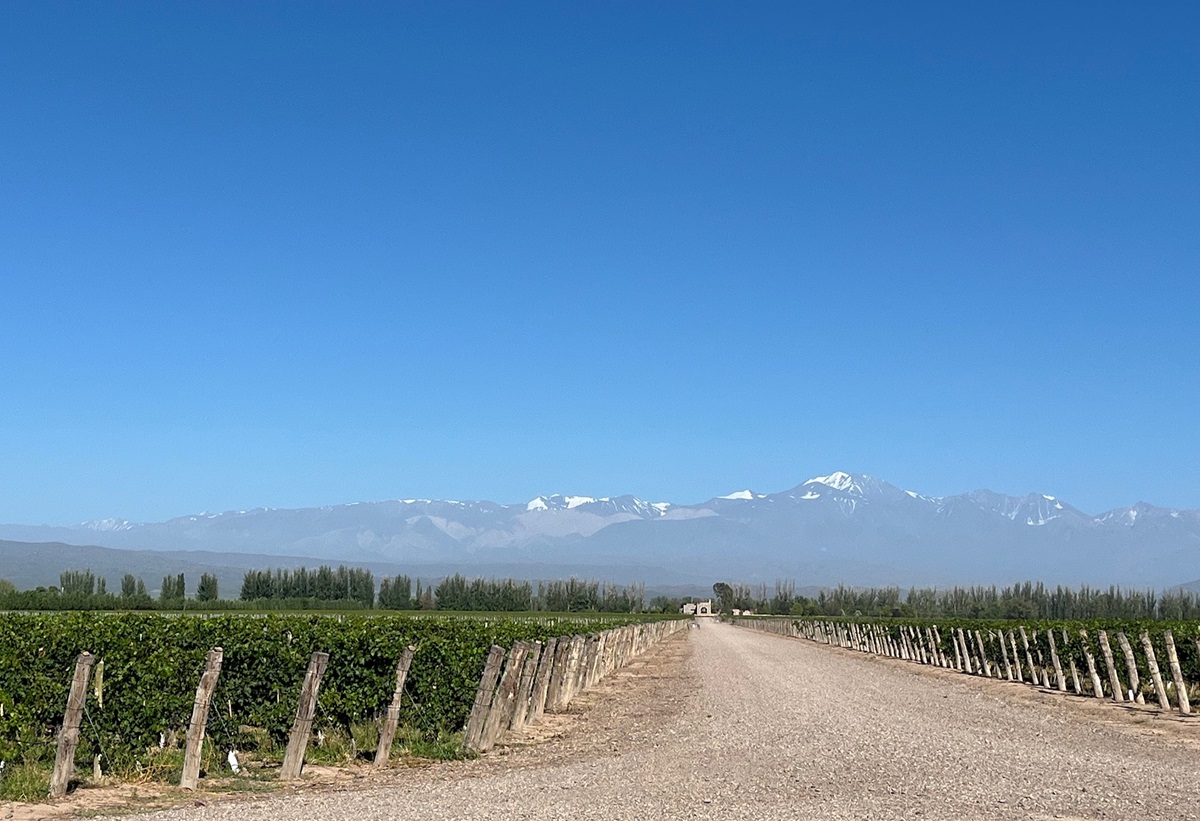GEORGIA’S WHITE GRAPES
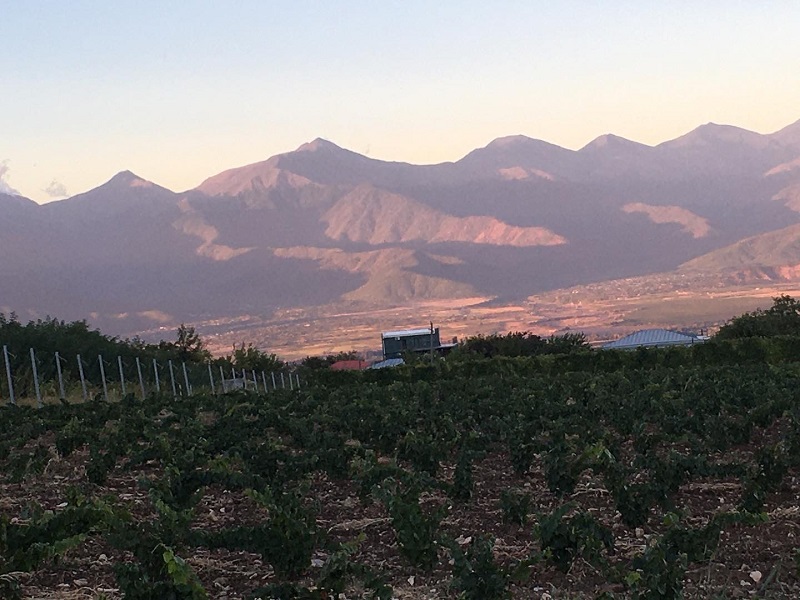
I am standing in the vineyards of Tsinandali, a subregion of Kakheti in Eastern Georgia. Ahead of me across the wide Alazani river valley the sun is setting on the mighty Caucasus mountain range, which forms the border with Russia to the north and keeps the cold northern air out.
Kakheti, stretching from Akhmeta and Telavi down to the Azerbaijan border to the east, is Georgia’s most famous wine region with 44,000 of the country’s total 55,000 hectares. Inner Kakheti has a ‘right bank’, which includes Tsinandali PDO best known for its whites, and a ‘left bank’ on the warm southern slopes of the Caucasus where red vines flourish.
“It is cooler in Tsinandali with good diurnal temperatures, clay sandy soils and deep limestone subsoil creating fresh minerally whites”, explains winemaker Giorgi Dakishvili of Dakishvili Family Vineyards, who with son Temuri consults for eight wineries including impressive larger producers Mildiani and Teliani Valley.
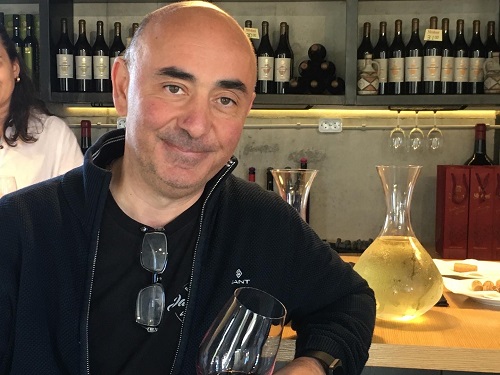
“Cool temperatures are an advantage in Tsinandali for growing white grapes, but it is wetter here than on Kakheti’s left bank with rain during flowering making organic viticulture difficult”, says Dakishvili (pictured above).
The vines around me in higher Tsinandali at 400-700m altitude are all indigenous Georgian white grapes. These white grape names are little unknown to western winelovers, but as Georgia’s wine quality progresses at breakneck speed, Kakhetian whites like Rkatsiteli, Mtsvane Kakhuri, Kisi and Khikhvi used for still whites will become better known. Alongside them are also rare grapes from Western Georgia, like Chinuri, Krakhuna and Tsolikouri being planted here as a base for Kakheti’s burgeoning sparkling wine industry.
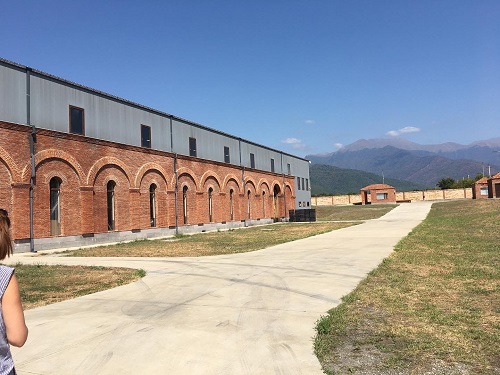
During Soviet times many of Georgia’s 525 native grapes were uprooted or neglected, with a focus on churning out volume from Kakheti’s flat valley floor. Today at the Saguramo government research centre which I visited north of Tbilisi (pictured below), there is a major project and experimental vineyard identifying, rescuing and propagating hundreds of rare native grapes like Chitistvala, Budeshuri and Kundza.
Rkatsiteli, favoured during Soviet times, is the most planted white grape in Georgia covering 43% of vineyards. Popular for its quality, yields, hardiness in drought and winter frosts – it works well in both European styles (stainless steel cool fermented) to create crisp aperitif style whites and in traditional ‘qvevris’ (pronounced key-ree) winemaking.
Georgia is famous for its ‘qvevris’ making intense rich spicy amber style wines, but these vast fired-clay amphora-shaped vessels of 1500 to 2000 litre capacity which are buried underground and used for fermenting and maturing are only used for 5% of Georgia’s wine production.
Floral scented Mtsvane grape is also made in both European and qvevri styles, but is often blended with Rkatsiteli to give lift and spice to the blend. Mtsvane comes in six different guises from Kakheti’s Kakhuri Mtsvane to Metskuri Mtsvane found on the revitalised terraces in Mekheti region near Turkey. Wineries Pi and Casreli both have good examples from Kakheti.
The Kisi grape was rescued by Dakishvili and others as recently as 2000; they have some of the oldest 60-80 year old plantings in Akhmeta on Kakheti’s right bank. “It is difficult to grow, susceptible to mildew and a shy yielder, but has fabulous breadth and density”, says Dakishvili. At its best fermented and matured for 6 months in qvevri, I tasted impressive Kisi qvevri from Mildiani, Tiko Estate and Teliani Valley.
The discovery of the trip was a rare grape called Khikhvi (see above) with its apricot and honeyed flavours. It is difficult to grow with 50% lower yields than Rkatsiteli, preferring higher altitude sites – but it makes beautifully soft succulent wines as shown by Twins Wine House and Mildiani.
Georgian grape names and their labels are a challenge, but they offer excitingly unique flavours. Watch this space to discover more about Georgia’s reds.
FIVE GEORGIAN WHITE WINES TO TRY:
CHITISTVALA 2020 Casreli Winery
£18.99 Georgian Wine Society
Blend of Chitistvala, Kisi & Rkatsiteli grapes matured in qvevri; deep dark orange, dried fruits, succulent fleshy palate with some grip. Superb example from ex-medic-turned-natural winemaker Misha Dolidze in Vachnadziani village.
ORANGE KISI 2020 Tiko Estate
£21.50 Butlers Wine Cellars; Astrum Wines
Levan Chychynadze is a winemaker to watch, recently returned from working abroad – his new range made with brother Giorgi is superb – like this impressive qvevri-aged Kisi with bright amber gold, fresh vibrant, good acidity and tannic grip.
KHIKHVI 2019 Teliani Valley
£15.65 Vino Wines, Edinburgh
Stainless steel fermented Khikhvi with no oak or qvevri influence here; showing the wonderful dried apricot and honey flavours of the grape in a clean well-made example.
KHIKHVI QVEVRI 2020 Qvevri Wine Cellar
£19.95 Lea & Sandeman
Fresh vibrant example of Khikhvi matured in qvevri made by Ivane Nareklishvili; floral notes, quite citric in flavour with the grape’s characteristic glycerol mouthfeel, silky soft palate and balanced grippy tannins.
KISI FAMILY SELECTION 2019 Dakishvili
£24 Georgian Wine Society; Bottle Apostle; Peckham Cellars
Benchmark example of qvevri-aged Kisi from old vines planted in 1930s. Ripe roast plum, hints of caramel, walnuts and sweet spice, firm tannins but approachable and beautifully made.
Join Rose’s Sherry Masterclass held in The Scotch Malt Whisky Society in Edinburgh on Wednesday 9 November www.rosemurraybrown.com
wine tastings
The perfect gift for the wine enthusiast in the family. Rose does In-person tastings too.
cellar advice
Rose does cellar valuations for private clients, valuations for insurers & bespoke portfolio management.
Related stories
March 31, 2024
By Rose Murray Brown MW Published in The Scotsman 30 March 2024 On 2 February 1659, the first wine made from grapes grown in South Africa was crafted by the Governor of the Cape, Jan van Riebeeck. He had planted vines four years earlier in the Company’s Garden near Cape Town from cuttings imported from France. Van Riebeeck’s first
March 24, 2024
By Rose Murray Brown MW Published in The Scotsman 16 March 2024 Heatwaves and bushfires were very much on the agenda when I visited Chile last month as winemakers prepared for their 2024 harvest in blistering heat and drought, with a plume of smoke from the devastating fires lingering over coastal hills. Heat and drought are the greatest challenges
March 23, 2024
By Rose Murray Brown MW Published in The Scotsman 9 March 2024 I have two glasses of Malbec in my hands from the same high-altitude vineyard in Uco valley in Argentina. I am in the Catena Institute of Wine in Mendoza with winemaker Agustin Silva. He has asked me to taste the two wines, both from the 1500m high

